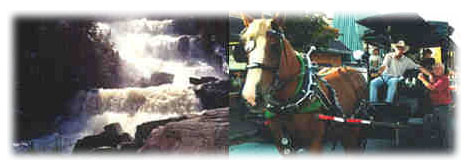 |
|||||


|
|
|
|||
|
|
|

|
|||
|
Français |
|
||||
|
Italiano |
|
||||
|
Español |
|
||||
|
Deutsch |
|
||||
|
|
|
||||
|
|
|
Lodging |
Restaurants |
Directories |
Airport |
|
|
|
Page |
Ste-Agathe |
Mt-Tremblant |
St-Jovite |
|
|
|
 |
|||||


|
|
|
|||
|
|
|

|
|||
|
Français |
|
||||
|
Italiano |
|
||||
|
Español |
|
||||
|
Deutsch |
|
||||
|
|
|
||||
|
|
|
Lodging |
Restaurants |
Directories |
Airport |
|
|
|
Page |
Ste-Agathe |
Mt-Tremblant |
St-Jovite |
|
using moon attraction to navigate in higher atmosphere. Who doesn't know the tides and their effects? For a very long time, man has observed this perpetual phenomenon of the sea against the coastal area. The attraction of the moon, mainly in cause, tends to lift the masses of water to create this alternating movement of the water. In fact, the water movement are following the movement of the moon, as the earth turns around. And we can say that a giant long wave goes around the earth. As the continent interfere with this movement, this wave stop at coastal areas and return in opposite direction when the moon attraction is not in cause anymore. if earth was covered completely with water, this wave would be continuous. The attraction of the moon is active on all earth's material, but as continents are solid, the effect is negligeable on the soil. Water being liquid, we can see that the effect is more evident and visible. But we cannot neglect the effect of the moon on the atmosphere. In fact, if the moon can create waves on a heavy matter like water, then what happens to the atmosphere which is composed of gases? We can presume that the atmosphere is submitted to the same process and that a wave of atmospheric gases rides regularly in the higher atmosphere. And as there is nothing to stop it, this wave should be continuous. Here is where crazy ideas begin. If sailors have been using tides to enter or get out of ports, and that surfers use wave to propel themselves, why can't we use this energy to travel in the higher atmosphere? Imagine a very large and light vehicle, similar to a manta ray, that would ride this atmospheric wave. With the extremely light and extremely solid materials that industry produces today, an helium filled vehicle, for example, could stay in the higher atmosphere for years. And as earth turns around in 24 hours and that the circumference of earth is approximatly 25,000 miles (40,000 km), this gives an approximate speed of 1041 mi/h (1680 km/h). If this idea is feasible, it could replace some satellites. As atmosphere is thinner in high altitude, the braking effect due to friction is at minimum, which could permit a large vehicle to function properly. Ideally, this vehicle should be inflatable as it goes higher up in the atmosphere, compensating for the decreasing density of the atmosphere. Slightly crazy as an idea, I admit. But they told the Wright brothers that the heavier than air couldn't fly! Pierre Forget, March 26 2005 You can write your comments and we will add them at the end of this article if they are relevant. |
|
All rights reserved |